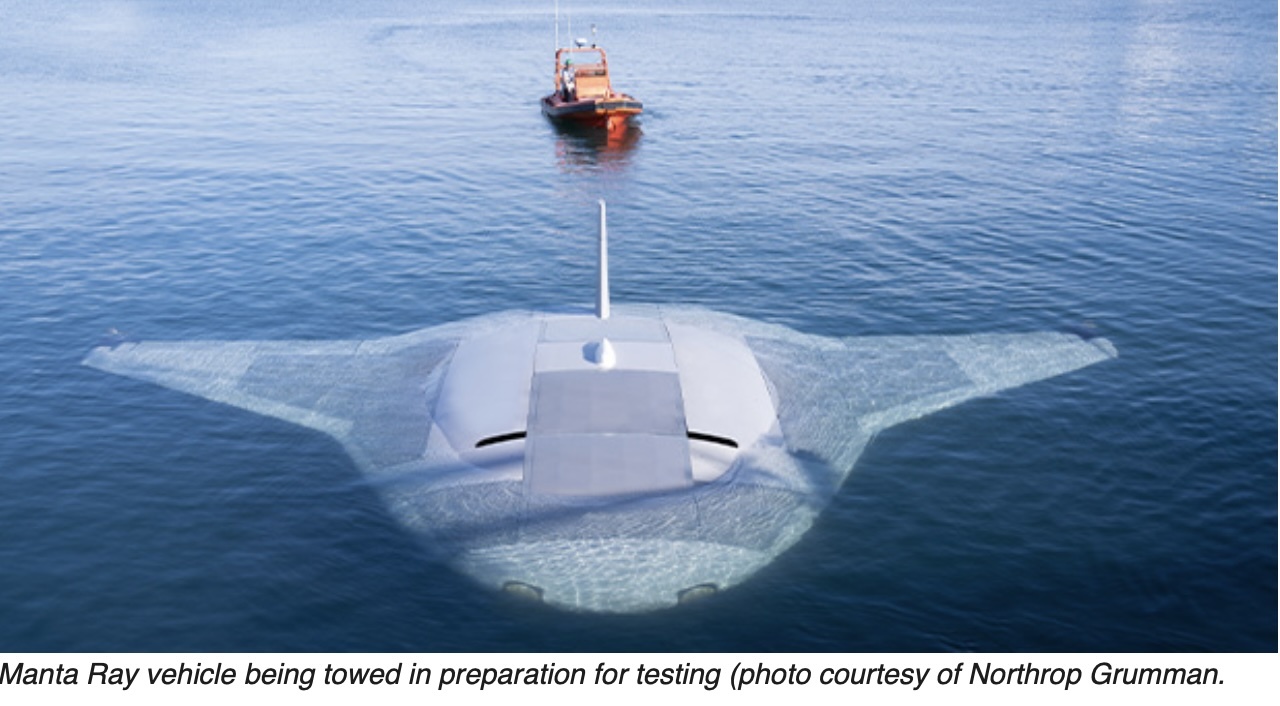5.05.2024

The Manta Ray prototype uncrewed underwater vehicle (UUV) built by performer Northrop Grumman completed full-scale, in-water testing off the coast of Southern California in February and March 2024. Testing demonstrated at-sea hydrodynamic performance, including submerged operations using all the vehicle’s modes of propulsion and steering: buoyancy, propellers, and control surfaces.
“Our successful, full-scale Manta Ray testing validates the vehicle’s readiness to advance toward real-world operations after being rapidly assembled in the field from modular subsections,” said Dr. Kyle Woerner, DARPA program manager for Manta Ray. “The combination of cross-country modular transportation, in-field assembly, and subsequent deployment demonstrates a first-of-kind capability for an extra-large UUV.”

Northrop Grumman shipped the Manta Ray prototype in subsections from the build location in Maryland to its test location in California. The demonstrated ease of shipping and assembly supports the possibility of rapid deployment throughout the world without crowding valuable pier space at naval facilities.
“Shipping the vehicle directly to its intended area of operation conserves energy that the vehicle would otherwise expend during transit,” said Woerner. “Once deployed, the vehicle uses efficient, buoyancy-driven gliding to move through the water. The craft is designed with several payload bays of multiple sizes and types to enable a wide variety of naval mission sets.”

Manta Ray aims to develop and demonstrate a new class of long-duration, long-range, payload-capable UUVs ready for persistent operations in dynamic maritime environments. DARPA is engaging with the U.S. Navy on the next steps for testing and transition of this technology.
A second Manta Ray performer, PacMar Technologies, is continuing testing of its full-scale energy harvesting system in 2024.
Quelle: DARPA
